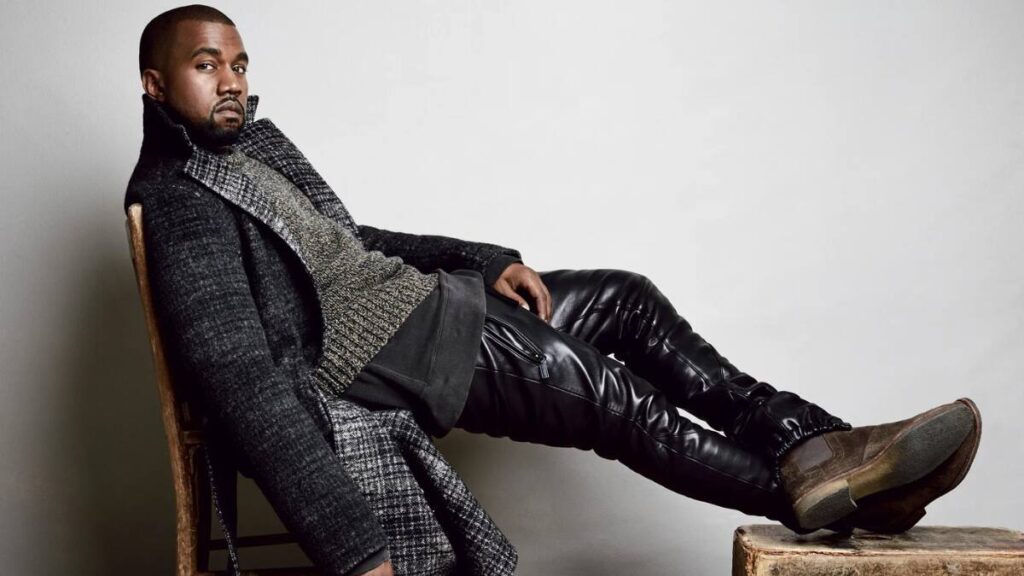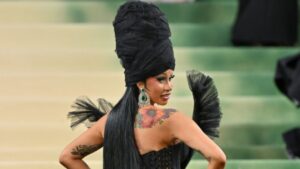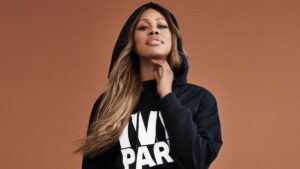At his peak, Kanye West stood in the spotlight of Paris Fashion Week, draped in custom Balenciaga, debuting a Yeezy collection that sold out before the models had even left the runway. At his lowest, he was trending worldwide for reasons that had nothing to do with music or fashion — his words igniting corporate exits, social backlash, and headlines that seemed to unravel a billion-dollar empire in real time.
This is the paradox of Kanye West’s brand: a cultural icon whose name once meant innovation, disruption, and the promise of something new, yet who became equally known for brand volatility and self-inflicted chaos. His story is more than a celebrity branding case study — it’s a living experiment in how fame, vision, and controversy can both build and break an empire.
So, how does a brand that seems unstoppable hit a wall this fast? And perhaps more importantly, could it happen again — to Kanye, or to anyone bold enough to make themselves the product?
The Genesis: From Beatmaker to Brand Visionary
The College Dropout Years: More Than Just Music
Before the world knew him as a fashion disruptor or billionaire entrepreneur, Kanye West was the Chicago producer quietly shaping the sound of early-2000s hip-hop. His beats powered Jay-Z’s The Blueprint, yet his name rarely appeared in headlines. That invisibility fueled an obsession: to prove he was more than just a beatmaker.
The College Dropout wasn’t just an album — it was a manifesto. Through vulnerable lyrics, sharp wit, and unapologetic ambition, Kanye crafted an origin story that resonated far beyond music. He wasn’t the hardened street rapper archetype; he was the underdog in a pink polo, redefining what authenticity meant.
In those years, he mastered the art of narrative control — using interviews, award speeches, and even perceived arrogance to build a “musician to mogul” trajectory. This was authentic storytelling in music branding at its most potent, laying the foundation for a commercial influence that would soon spill into every corner of culture.
First Lessons in Cultural Influence
Long before Yeezy sneakers and headline-dominating scandals, Kanye West was already testing the boundaries of public perception. In early award show appearances, he delivered impassioned, unscripted speeches — moments that seemed impulsive but worked like brand accelerators. One minute, he was praising artistry; the next, boldly declaring himself the voice of a generation.
These flashes of unpredictability weren’t just about ego — they made him a media magnet. In a genre where image was as important as sound, Kanye understood the hip-hop influence on culture wasn’t limited to music videos or radio play. Public moments became part of the product.
Was this calculated, or instinctive? It’s hard to say — and that’s what kept audiences hooked. Each statement, each interruption, hinted at a future where his brand would thrive not just on creation, but on conversation, controversy, and an ever-expanding definition of what it meant to be Kanye West.
Yeezy, Fashion, and the Billion-Dollar Dream
From Adidas Partnership to Streetwear Dominance
When Kanye West signed with Adidas in 2013, it was more than a shoe deal — it was the launchpad for a celebrity-led fashion brand that would redefine luxury streetwear. Drawing on his music fame and cultural influence, Kanye positioned Yeezy as a fusion of streetwear authenticity and high-fashion exclusivity. The designs were minimalist yet bold, the color palettes muted yet instantly recognizable, creating an aesthetic that felt both futuristic and wearable.
Unlike typical endorsements, Kanye controlled the creative direction, shaping everything from silhouette to marketing. Scarcity drops fueled hype, while strategic collaborations elevated Adidas Yeezy growth into a multi-billion-dollar force. In a market crowded with hype sneakers, Yeezy stood out by blending celebrity narrative, design innovation, and a sense of belonging — not just selling shoes, but offering entry into a cultural movement.
The Art of Scarcity Meets Mass Desire
Yeezy’s success wasn’t built on endless supply — it thrived on scarcity marketing. Kanye West borrowed tactics from luxury fashion houses, releasing limited quantities in carefully timed drops that sparked instant hype culture. Each release was an event, with social media buzzing, lines forming outside stores, and resale prices skyrocketing within hours.
This strategy mirrored the exclusivity of brands like Louis Vuitton, yet spoke the visual language of streetwear giants such as Supreme. By keeping inventory tight and unpredictable, Kanye turned consumer frenzy into free advertising. Fans didn’t just want Yeezys for the design — they wanted them because not everyone could have them. In blending the prestige of high fashion with the hunger of streetwear demand, Yeezy created a blueprint for how to turn mass desire into lasting brand equity.
Scaling Without Selling Out
As Yeezy demand exploded, Kanye faced the challenge of brand scale without losing the exclusivity that made it magnetic. Partnering with Adidas allowed for wider distribution, but he insisted on maintaining creative control over silhouettes, colorways, and campaign aesthetics. This balance kept brand authenticity intact — at least for a while.
Production runs increased, making Yeezys more accessible than in the early days, yet the brand retained its high-demand aura through selective releases and limited-edition models. The question lingered: had Kanye successfully expanded without selling out, or were hairline cracks already forming in the mystique? For some, greater availability meant cultural dilution; for others, it was proof that a visionary could grow without compromise. In hindsight, the line between scaling and slipping was thinner than anyone — perhaps even Kanye — imagined.
How Unpredictability Became the Brand
Calculated Outbursts and the PR Feedback Loop
From storming the stage at the MTV Video Music Awards to unleashing unfiltered Twitter tirades, Kanye West turned controversy into a marketing engine. These moments generated massive earned media — headlines, think pieces, and viral clips that kept his name in circulation without a dollar spent on ads. Whether fueled by impulse or strategy, this PR risk-taking blurred the line between personal drama and brand promotion.
Controversy as marketing worked because it reinforced Kanye’s image as an unfiltered truth-teller, someone willing to defy norms in public. But the very tactics that kept him culturally relevant also carried escalating risks: alienating partners, exhausting fans, and overshadowing the art itself. In Kanye’s world, the PR feedback loop could create as easily as it could destroy — and eventually, it did both.
When the Persona Overshadows the Product
At first, Yeezy thrived because Kanye West’s persona amplified its allure — every design drop felt like a cultural event. But over time, the conversation shifted. Headlines increasingly focused on his political statements, erratic interviews, and social media battles rather than the shoes or clothing themselves. The brand’s identity became tethered less to minimalist design innovation and more to the volatility of its creator.
This dynamic isn’t unique to Kanye. We’ve seen similar arcs with other celebrity brands — think Johnny Depp’s Dior Sauvage campaign during legal controversies, or Elon Musk’s Tesla announcements overshadowed by Twitter antics. In each case, public identity began dictating brand perception. For Yeezy, the danger was clear: when the persona eclipses the product, design credibility can erode, and the brand’s fate becomes inseparable from the individual’s reputation.
Social Media as a Double-Edged Sword
Kanye West’s Twitter and Instagram feeds became an unfiltered extension of his brand — a place where product teasers, political rants, and personal confessions collided in real time. This social media volatility kept fans and critics glued to their screens, turning every post into potential headline material. For Yeezy, it meant constant visibility, but also the looming threat of a real-time brand crisis.
Parasocial relationships deepened the stakes; followers felt personally connected, interpreting every post as a glimpse into Kanye’s unmediated truth. Online culture observers noted how these raw, unpolished moments blurred the boundaries between artist and brand. Yet, the same digital intimacy that fueled hype could also magnify missteps instantly, leaving no buffer between impulse and public perception — a risk few brands can survive for long.
From Billionaire Status to Corporate Fallout
When Controversy Crosses the Point of No Return
In October 2022, Kanye West’s incendiary remarks sparked a wave of cancel culture backlash that moved faster than most corporate PR teams could respond. Within days, Adidas — his most lucrative partner — announced it was terminating its deal, citing brand safety concerns. The decision effectively ended the Yeezy-Adidas collaboration overnight, wiping billions from projected revenue.
Other partnerships unraveled in quick succession: Balenciaga severed ties, major talent agencies dropped him, and streaming platforms quietly reduced his visibility. The speed of this collapse revealed the fragility of even the most powerful celebrity brands when public sentiment shifts. It was a stark reminder of the risks embedded in celebrity partnership strategies — when the individual becomes the brand, one controversy can push it past the point of no return.
The Economics of Losing Trust
The collapse of Kanye West’s partnerships didn’t just bruise his public image — it gutted the financial foundation of his empire. Adidas projected a $1.3 billion revenue shortfall after ending Yeezy production, a staggering example of brand equity loss in real time. Other deals, from high-fashion collaborations to media contracts, evaporated almost overnight, representing hundreds of millions in vanished income.
But the deeper damage was harder to quantify: long-term consumer trust erosion. Once-loyal fans questioned whether supporting Yeezy aligned with their values, and new buyers hesitated, wary of public backlash. The absence of a clear crisis communication strategy compounded the problem, allowing perception to calcify. In the anatomy of a celebrity brand collapse, numbers tell part of the story — the rest lives in the brand’s diminished ability to inspire future demand.
Kanye vs. the Icons: A Comparative Branding Lens
Kanye West’s brand journey invites comparisons to other cultural powerhouses who built empires on vision and personality. Like Steve Jobs, he fused visionary leadership with obsessive creative control, shaping every detail of his products. Both understood that design wasn’t just function — it was storytelling. Yet Jobs harnessed his unpredictability within a controlled narrative, while Kanye often let chaos spill over into the brand itself.
In the realm of brand reinvention, Madonna stands as a close parallel. She thrived on shedding skins and provoking audiences, but her calculated reinventions kept her commercially viable for decades. Kanye’s reinventions, while equally bold, have often arrived tangled with controversy, making them harder to monetize consistently.
Elon Musk offers another mirror: a high-profile entrepreneur whose personal brand is inseparable from his companies, thriving on risk but flirting with reputational volatility. Rihanna, in contrast, has balanced artistry with strategic personal brand management — keeping controversy minimal while building Fenty into a global powerhouse.
I Met the Kanye Brand Up Close
I still remember the first time I experienced the Kanye brand in person — a Yeezy Season launch in a cavernous New York warehouse. The crowd was a mix of fashion editors in monochrome layers, sneakerheads clutching raffle tickets, and curious onlookers who’d managed to talk their way in. There was an electricity in the air, a kind of unspoken agreement that we were witnessing something more than a fashion show.
When Kanye’s presence filled the room, it wasn’t loud — it was gravitational. He stood off to the side at first, scanning the audience like a director watching a scene unfold. The lights dimmed, models walked in precise, almost hypnotic formations, and the soundtrack — his unreleased tracks — wrapped the room in a pulse that felt both intimate and monumental.
The brand atmosphere was unlike anything I’d seen: minimalist, but emotionally charged. Around me, fan culture was on full display — strangers swapping stories of their first Yeezys, others quietly recording every moment on their phones like archivists of a living legend.
By the end, it was clear that Yeezy wasn’t just selling clothes or sneakers. It was selling an experience, a moment you could tell people about years later and still feel the same rush. And in that moment, I understood the pull — and the power — of Kanye’s brand.
Lessons in Building (and Breaking) a Brand in the Age of Personality
The Genius–Madness Tradeoff
Kanye West’s career is a masterclass in the fine line between brilliance and self-destruction. His willingness to embrace visionary leadership risks propelled him from Grammy-winning producer to fashion mogul, creating moments of cultural impact few artists ever touch. But that same fearlessness fueled an eccentric brand positioning that often-defied market logic and alienated key allies.

Creative volatility was part of his appeal — every project felt like it could either redefine an industry or implode spectacularly. For years, this unpredictability worked in his favor, making him impossible to ignore. Yet, without guardrails, the very traits that made him magnetic also made his brand fragile. Kanye’s story underscores an uncomfortable truth: in the age of personality-driven businesses, genius can elevate a brand to unprecedented heights, but unchecked, it can just as quickly push it past the point of recovery.
Guardrails for High-Risk Brands
For brands built on bold personalities and disruptive ideas, unpredictability can be an asset — but only if it’s managed. Effective crisis prevention starts with anticipating how a founder’s actions or statements might be received and having contingency plans ready before the headlines hit. This isn’t about silencing authenticity; it’s about creating a framework for brand narrative management that can weather sudden storms.
Sustainable brand risk means knowing which boundaries can be pushed for cultural relevance and which would trigger irreparable damage. That might involve appointing a trusted inner circle to filter public messaging, diversifying the brand’s identity beyond one person, or staging controversies with a clear strategic endgame. In high-risk branding, the goal isn’t to eliminate unpredictability — it’s to channel it into moments that excite audiences without eroding trust, ensuring the brand remains both dynamic and durable.
The Unwritten Final Chapter
Kanye West’s brand legacy is already cemented — not just in music charts or fashion archives, but in the cultural impact of how he blurred the lines between art, commerce, and persona. He proved that unpredictability could be a branding superpower, capable of turning a sneaker drop into a global news event. But he also showed the cost when that volatility tips into self-sabotage.
The question now is whether celebrity comeback potential still exists in a landscape where public opinion moves at the speed of a trending hashtag. Can a brand so tied to its creator’s identity reframe its narrative without erasing the parts that made it magnetic?
Unpredictability still has power, but today’s consumers demand both excitement and accountability. Kanye’s next chapter — if he writes one — will determine whether his story becomes a cautionary tale or a rare case study in redemption. The ending, for now, remains unwritten.
Mohit Wagh is the co-founder of The Graval with over 10 years of experience in SEO and content strategy. He specializes in crafting data-driven, authoritative content that blends cultural insight with digital growth.





6 thoughts on “How Kanye West Built and Broke the Most Unpredictable Brand in Modern History”